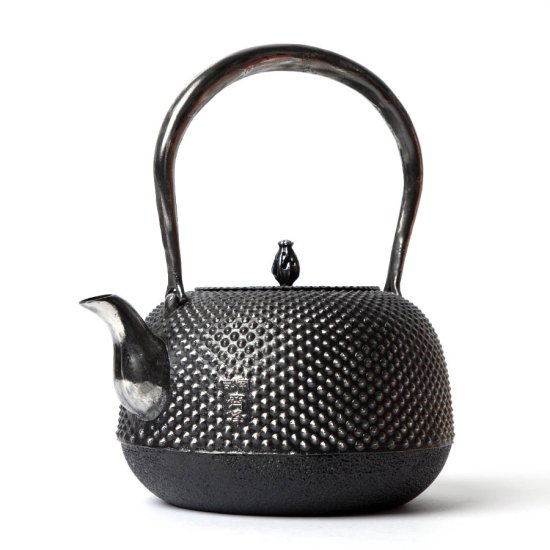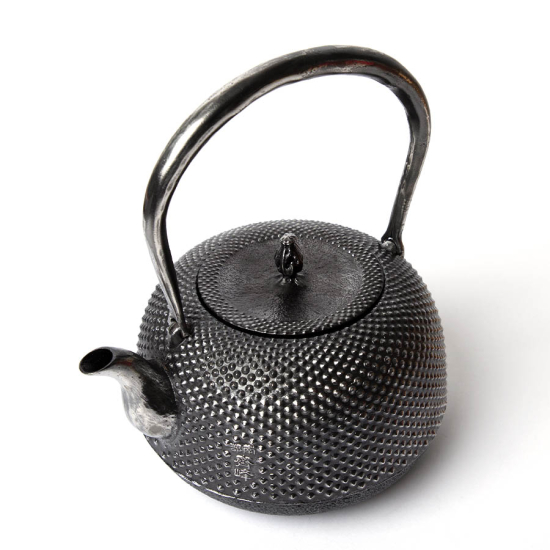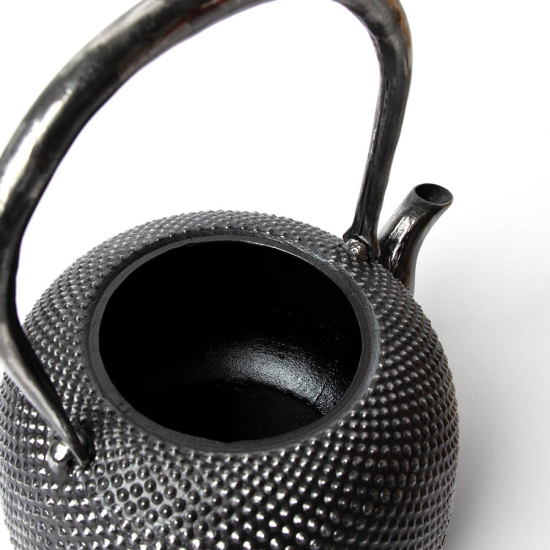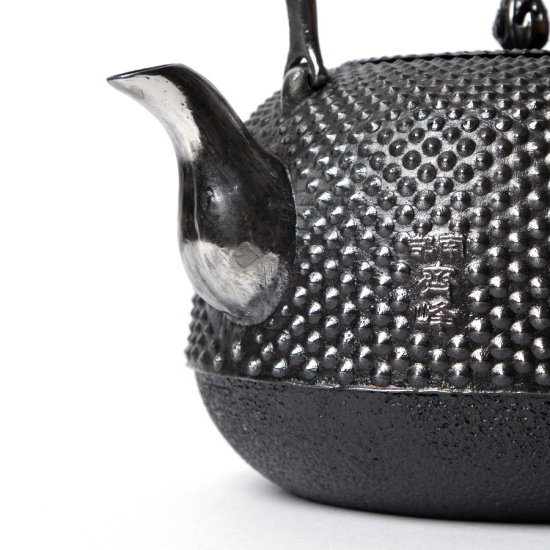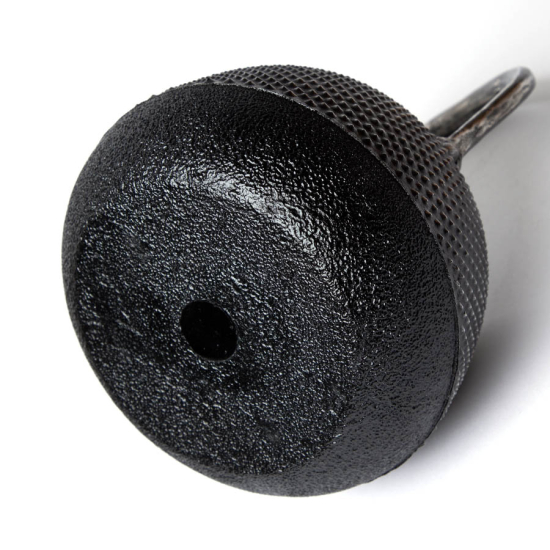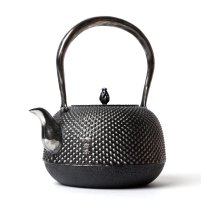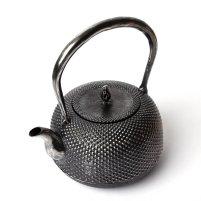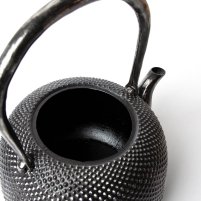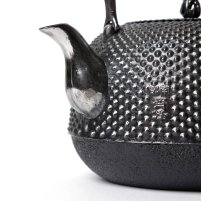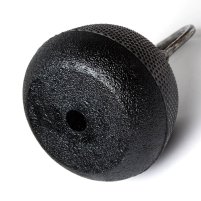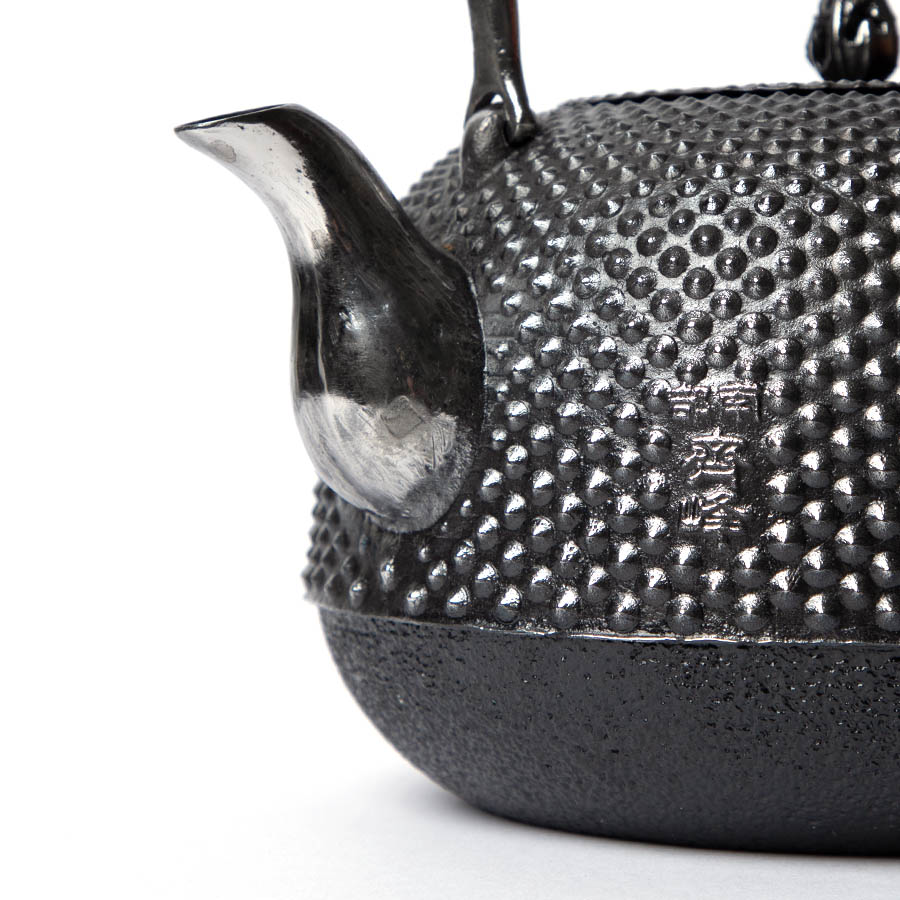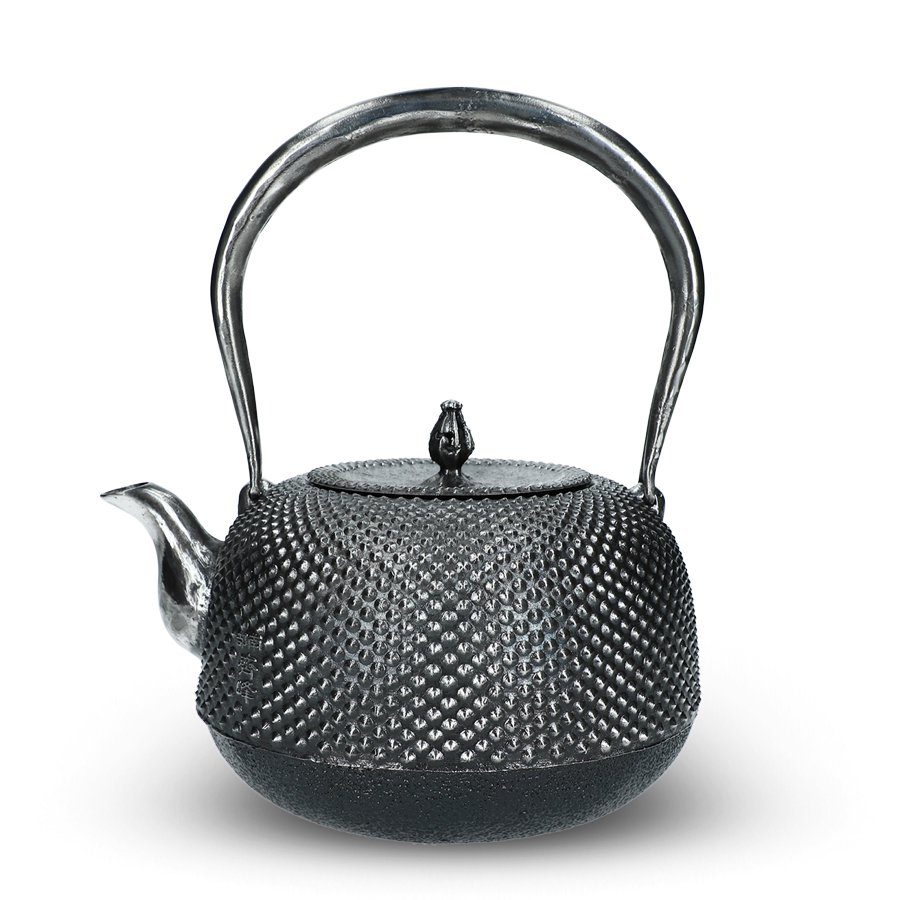The fairest and shiniest of them all, the Satetsu Tetsubin is the crown of Japanese cast iron kettles. Made of natural ironsand, or Satetsu (砂鉄 "sand iron") in Japanese, this precious material has a very high concentration of iron and was historically used in samurai sword making.
As Tetsubin, Satetsu offers excellent protection against rust due to its high carbon content and density, therefore these kettles do not need to undergo the protective Kamayaki (釜焼き) firing process, which means they retain their silvery finish. They are also extremely solid and produce a crystal clear note when hit, besides making a pleasant ringing sound when the water begins to boil. Furthermore Satetsu Tetsubin release a significant amount of iron into the boiled water, and are said to make the best tasting water for tea.
Nowadays, ironsand has become rare in Japan, together with the craftsmen who know how to cast it. In addition, it takes a lot of time and effort to make a Satetsu Tetsubin – each kettle is cast in a single-use mould – making them extremely valuable.



